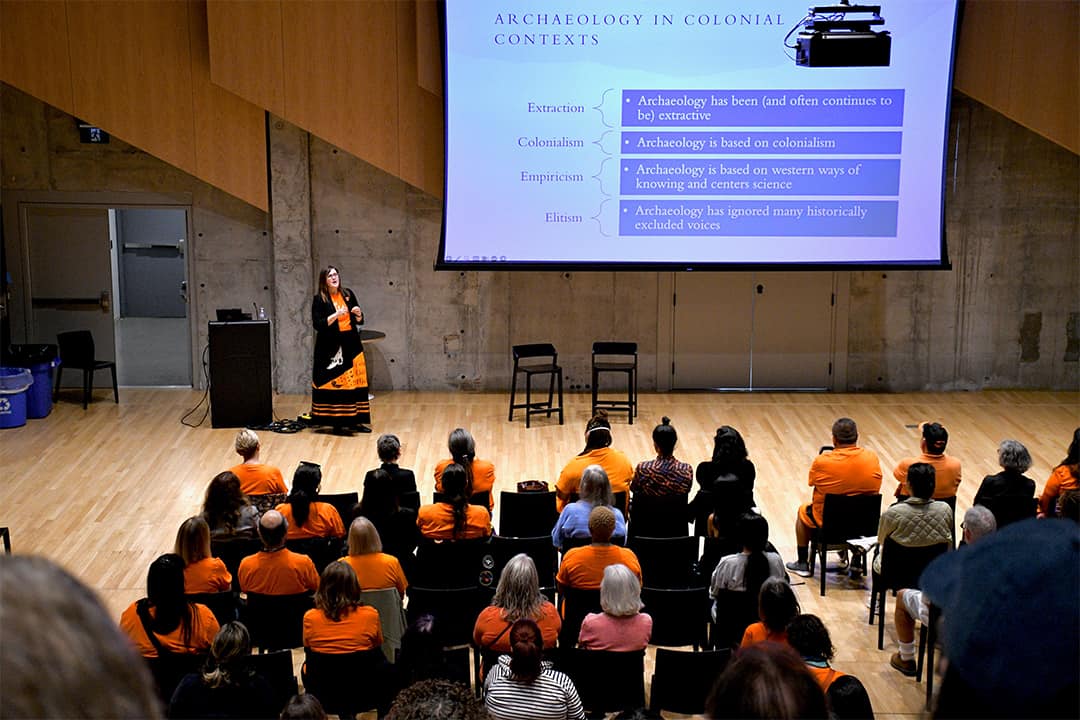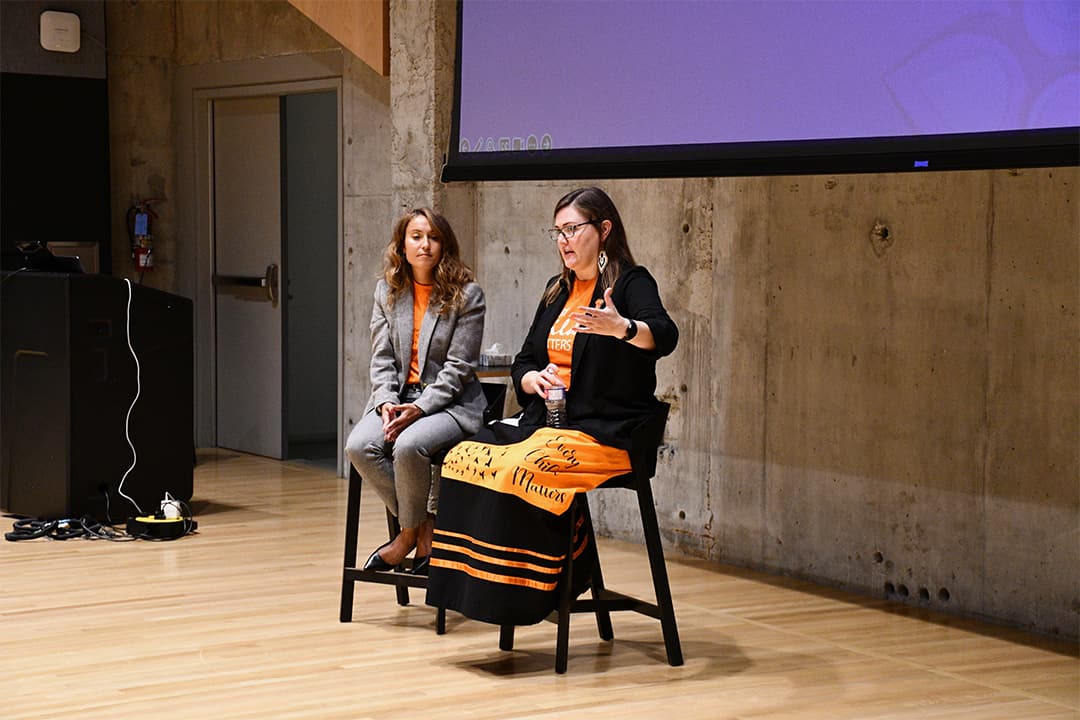Content warning: This article discusses residential schools.
On September 29, University of Alberta anthropology professor Kisha Supernant held a talk at UTSG, entitled “Truth First: Indigenous Archaeology as Restorative Justice” to discuss her research in identifying the unmarked graves of Indigenous children killed in residential schools.
This event was held in recognition of National Truth and Reconciliation Day, also known as Orange Shirt Day, which is celebrated annually on September 30. It is a day to honour Indigenous residential school survivors and the legacy of those who never came home.
Archaeology as restorative justice
Supernant is a Métis/Papaschase/British professor in the Department of Anthropology at the University of Alberta and a committee member on the National Advisory Committee on Residential Schools Missing Children and Unmarked Burials. She situates herself as an “Indigenous anthropological archaeologist,” centring her work on Indigenous principles of relationality and responsibility to challenge current settler colonial power dynamics. Her work addresses questions such as: who was archaeology meant for, and how can it be used to tell Indigenous peoples’ stories when Indigenous peoples have often been excluded?
Supernant began her talk with an overview of archaeology as a discipline and stated that “at its very core, [archaeology] is an inherently extractive process.” The field has long systematically excluded Indigenous voices.
Supernatant emphasized the fact that archaeology continues to be a field that is “male and white.” She hopes that her work will shift the narrative and scope of archaeology and bring to the table perspectives that the field has long excluded while simultaneously contributing to Indigenous restorative justice.
Supernant challenges the discipline of archaeology as grounded only in an idea of objectivity by taking on heart-centred practices — something she mentions in her book Archaeologies of the Heart. She describes four “chambers of archaeology”: care, emotion, relationality, and rigour. This toolkit serves as Supernant’s guide for her most recent work using non-invasive surveys and mapping tools to uncover the missing graves of Indigenous children who never came home from the residential school system.
The 94 Indigenous Calls to Action, as proposed by the Truth and Reconciliation Commission, are steps that the Government of Canada must take to reconcile with Indigenous communities and redress the legacy of residential schools, where the government placed Indigenous children as an attempt to essentially take away their fundamental Indigeneity.
Supernant’s work is most closely related to Call to Action #74, which states: “We [the Truth and Reconciliation Commission of Canada] call upon the federal government to work with the churches and Aboriginal community leaders to inform the families of children who died at residential schools of the child’s burial location, and to respond to families’ wishes for appropriate commemoration ceremonies and markers, and reburial in home communities where requested.”
Searching for sites where Indigenous residential school children are buried
Supernant has faced significant obstacles in her progress toward her goal: informing families of their loved ones’ burial locations. Some of the challenges include that many children who died in the schools are not in the records, their sites of burial are unknown, and the cemeteries themselves are gone. However, the discovery of the graves of close to 215 schoolchildren on the site of the former Kamloops Indian Residential School brought national and international attention to the atrocities committed by Canada’s residential schools, and a newfound urgency to Supernant’s work.
Supernant said she begins her process of searching for potential sites of burial with an analysis of the most appropriate technology to use in a specific area. “Certain technologies are best suited in certain places,” she said. Some potential methods for searching include aerial technology, such as flying drones above the landscape and historical aerial photos to determine changes to the landscape; LIDAR (light detection and ranging) mapping technology, which is a method of detecting objects through analysis of pulsed laser light reflected from the surface; and ground penetrating radar (GPR), which is a geophysical method that uses radio waves to capture images below the surface of the ground.
In the past, archaeologists have used ground-based methods to search for the graves of Indigenous children at former residential schools. However, as Supernant points out, GPR technology and similar tools have significant limitations. One of them is that GPR is inadequate in terrains that are not clear or flat, meaning that researchers often have to clear trees, bushes, and other vegetation from the landscape, which is not always possible. Supernant’s research uses GPR to identify potential burial locations, so acknowledging the limitations of GPR technology is essential to her work.
In order to bring justice for the children and communities at the core of her work, Supernant focuses on the communities where she conducts her research, ensuring that they are present at every step of the research process. This includes making sure that the communities have supports in place, both emotional and spiritual, for conducting appropriate ceremonies for the bodies that they find.
“This is a decade-long process at least… There is no school across this country where all the work that needs to be done has been done, and the only people who can say that it’s done are the survivors,” Supernant said. “We need sustainable support.”
If you or someone you know has been affected by residential schools and is in distress, you can call:
- Indian Residential School Crisis Line at 1-866-925-4419 (available 24 hours a day),
- Hope for Wellness Helpline at 1-855-242-3310,
- KUU-US Crisis Line at 250-723-4050,
Talk4Healing Help Line at 1-855-554-4325.






No comments to display.